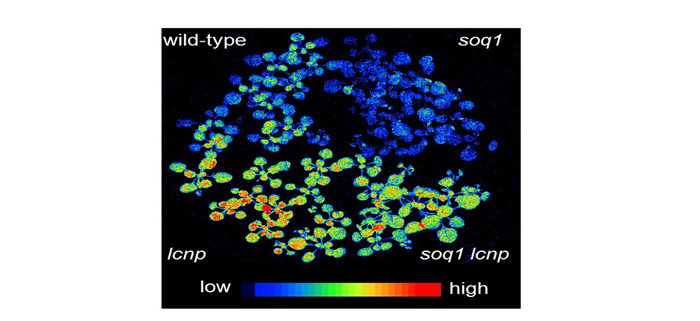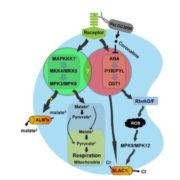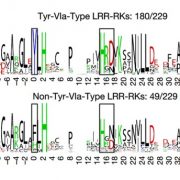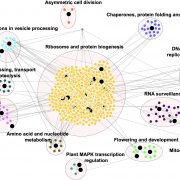Protection from the Sun: Sunscreen for Plants
Malnoë et al. demonstrate that a protein from the lipocalin family plays a role in promoting energy dissipation that prevents damage from long-term light stress. The Plant Cell (2017). https://doi.org/10.1105/tpc.17.00536
By Alizée Malnoë
Background: Light is necessary for plant growth but in excess can be damaging. One strategy that plants have evolved to prevent damage is to dissipate excess absorbed light energy safely as thermal energy. This process of energy dissipation occurs at the same location where energy is harvested by pigment molecules such as chlorophylls and carotenoids. Several proteins and cellular factors are known to fine-tune the energy harvesting and dissipative states, especially ones that help to respond rapidly to light intensity changes. Much less is known about the proteins and factors that respond slowly and whether they promote protection against light. Prior to this work, the protein Suppressor of Quenching 1 (SOQ1), had been identified to negatively control a slowly reversible form of energy dissipation.
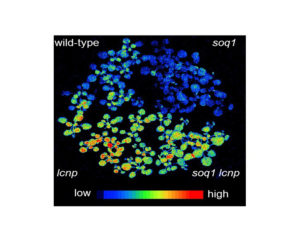
After a cold and high light stress, wild-type and soq1 display less chlorophyll fluorescence, equivalent to more energy dissipation, whereas lcnp mutants display high chlorophyll fluorescence. This means that LCNP is required for energy dissipation.
Questions: We wanted to identify the molecular players required for slowly reversible energy dissipation and conditions under which they are active, and test whether this process is photoprotective.
Findings: We used the Arabidopsis soq1 mutant, which displays more slowly reversible energy dissipation, as a genetic entry point to uncover molecular players involved in this process. We found that mutants deficient in the light-harvesting system or the plastid lipocalin (LCNP) no longer perform this type of energy dissipation. In addition, we demonstrated that this process is active in wild-type plants under stress conditions, such as cold and high light. Operation of this process indeed protects against light stress as it limits oxidative damage to lipids. This process might be dominant in plants that experience long-term high light stress combined with other abiotic stress such as drought or cold temperature.
Next steps: We would like to understand what changes to the light-harvesting system cause this dissipative state and how the lipocalin protein enables this state. We are also working on figuring out how this process is turned off. Manipulation of light usage by plants could ultimately lead to higher crop yields.
Alizée Malnoë, Alex Schultink, Sanya Shahrasbi, Dominique Rumeau, Michel Havaux and Krishna K. Niyogi. (2017). The plastid lipocalin LCNP is required for photoprotective sustained energy dissipation in Arabidopsis thaliana. Plant Cell DOI: https://doi.org/10.1105/tpc.17.00536


